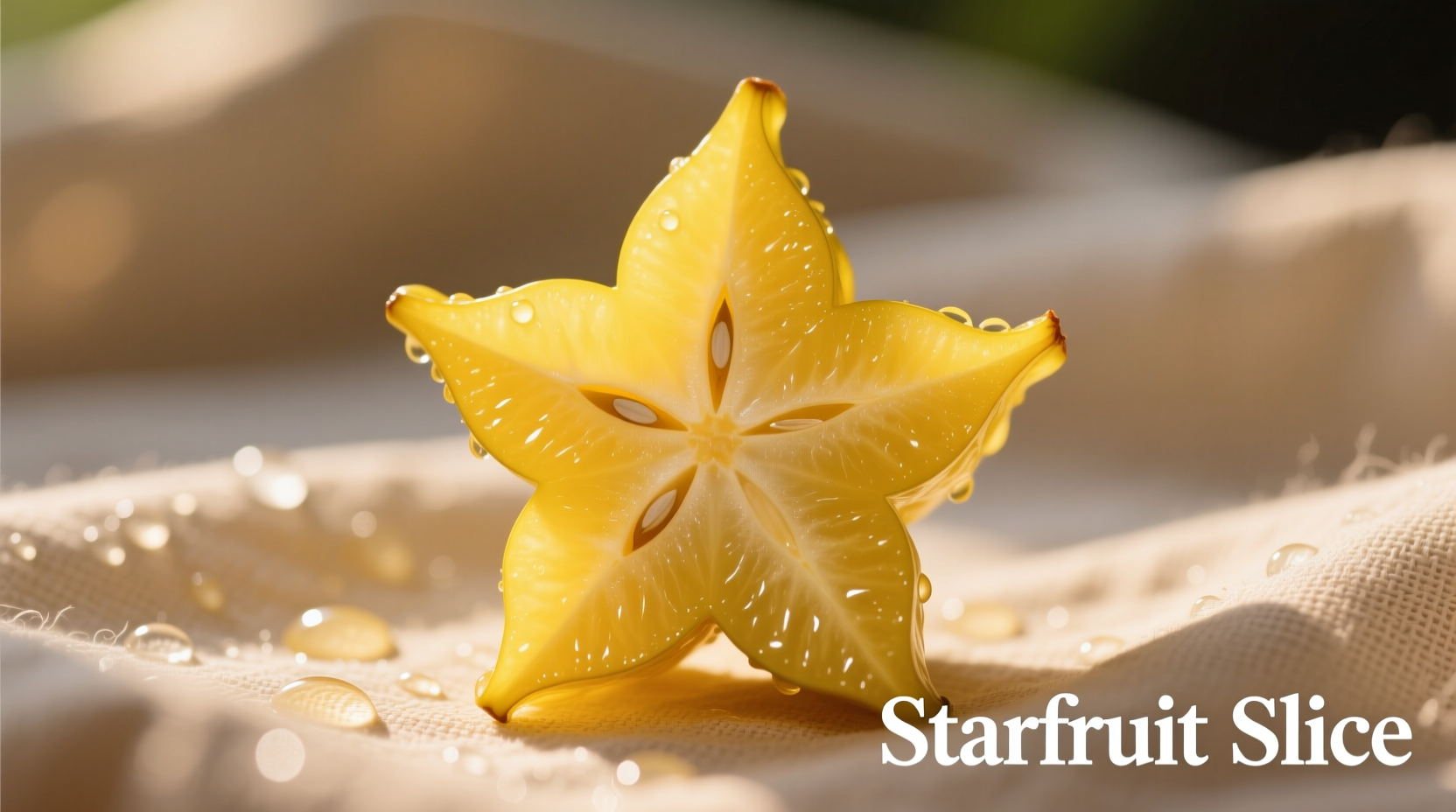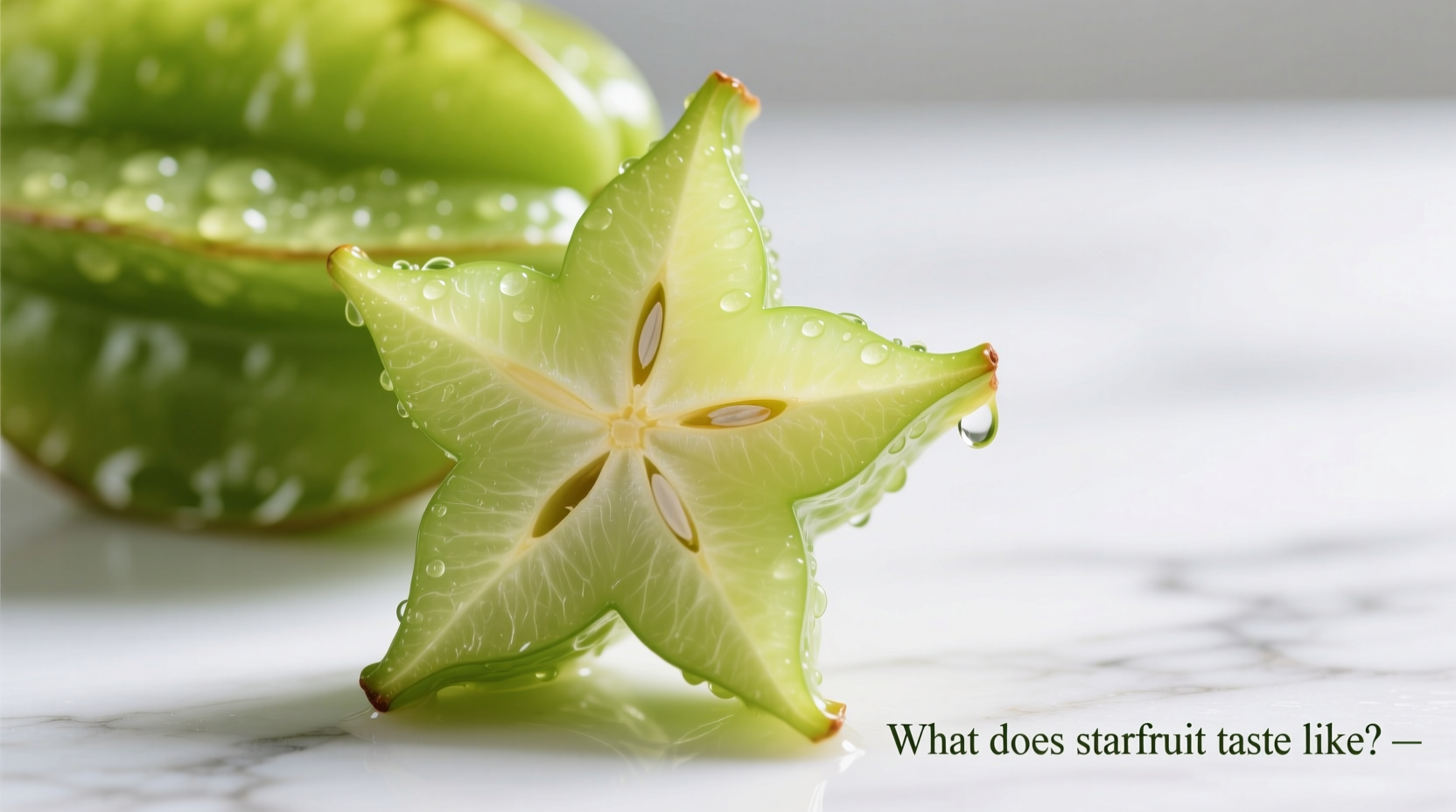Ever sliced into a star-shaped fruit and wondered what flavor adventure awaits? Understanding what does starfruit taste like unlocks a world of culinary possibilities for this tropical gem. Whether you're encountering starfruit at your local grocery store or planning to use it in recipes, knowing its precise flavor profile helps you select, prepare, and enjoy it perfectly.
The Starfruit Flavor Experience: More Than Just Sweet or Sour
Starfruit (Averrhoa carambola) delivers a complex sensory experience that changes dramatically based on ripeness. This tropical fruit contains natural oxalic acid crystals that create its distinctive flavor profile. When you take your first bite:
- Sweet varieties (most common in US markets) offer a refreshing blend of apple, pear, and citrus notes with subtle floral undertones
- Sour varieties provide a more intense citrus punch similar to unripe grapefruit with green apple tartness
- Texture ranges from crisp and juicy when ripe to firm and slightly crunchy when underripe
- Aroma features subtle floral notes with citrus undertones that intensify as the fruit ripens
According to the USDA Agricultural Research Service, starfruit's unique flavor comes from a combination of malic, citric, and oxalic acids working in harmony with natural sugars. This chemical composition creates that signature sweet-tart balance that makes starfruit so versatile in both sweet and savory applications.
How Ripeness Transforms Starfruit Flavor
Unlike many fruits, starfruit's taste changes significantly as it ripens. Understanding these stages helps you select starfruit perfect for your intended use:
| Ripeness Stage | Visual Indicators | Flavor Profile | Best Culinary Uses |
|---|---|---|---|
| Underripe | Bright green color, firm texture | Sharp, acidic, intense citrus flavor | Salads, marinades, pickling |
| Partially Ripe | Yellow-green color, slight softening | Balanced sweet-tart, mild floral notes | Smoothies, salsas, garnishes |
| Fully Ripe | Bright yellow with brown ridges, slightly soft | Sweet with subtle tartness, complex flavor | Desserts, juices, standalone eating |
This ripeness guide comes from University of Florida's Tropical Research and Education Center, which has studied starfruit cultivation and sensory characteristics extensively. Their research confirms that the browning of ridges indicates peak sugar development while maintaining the fruit's signature tartness.
Selecting the Perfect Starfruit for Your Palate
When choosing starfruit, consider your flavor preferences and intended use:
- For sweet applications: Look for fully yellow fruit with minimal green and pronounced brown ridges. These deliver the sweetest what does carambola taste like experience with just a hint of tartness.
- For tart applications: Select fruit with more green coloring and firm texture. These provide the characteristic what does starfruit taste similar to citrus experience.
- Avoid fruits with extensive brown spots beyond the ridges, as these indicate overripeness and potential fermentation.
Seasonality matters too—peak starfruit season runs from late summer through winter in tropical growing regions. During these months, you'll find the most flavorful fruit with optimal how would you describe starfruit taste characteristics.

Preparing and Enjoying Starfruit Like a Pro
Starfruit requires minimal preparation to enjoy its unique flavor:
- Wash the fruit thoroughly
- Slice off the brown ridges with a sharp knife
- Cut crosswise into star-shaped slices (no need to peel or remove seeds)
- Enjoy immediately for best flavor
For those exploring what does raw starfruit taste like, try it plain first to experience its natural flavor profile. Then experiment with these pairing suggestions:
- Sweet starfruit pairs beautifully with mango, coconut, and lime
- Tart starfruit complements seafood, avocado, and chili
- Add to fruit salads for visual appeal and flavor complexity
- Use as a garnish for cocktails and desserts
Important Considerations When Enjoying Starfruit
While starfruit offers a delightful taste experience, certain considerations affect how you might experience what does starfruit taste profile include:
- People with kidney issues should avoid starfruit due to its oxalic acid content, which can be problematic for those with impaired kidney function (per National Kidney Foundation)
- The fruit's waxy skin makes it excellent for garnishing without worrying about pesticides
- Starfruit oxidizes quickly—add lemon juice to preserve color in prepared dishes
- Its high water content (91%) makes it incredibly refreshing but means it doesn't store well once cut
Bringing Starfruit's Unique Flavor to Your Table
Understanding what starfruit tastes like opens doors to creative culinary applications. Whether you're curious about what does starfruit taste similar to or seeking to expand your tropical fruit repertoire, this versatile fruit delivers a distinctive flavor experience that adapts beautifully to both sweet and savory preparations. By selecting the right ripeness for your needs and understanding its flavor characteristics, you can fully appreciate why starfruit has become a favorite in tropical cuisines worldwide.











 浙公网安备
33010002000092号
浙公网安备
33010002000092号 浙B2-20120091-4
浙B2-20120091-4